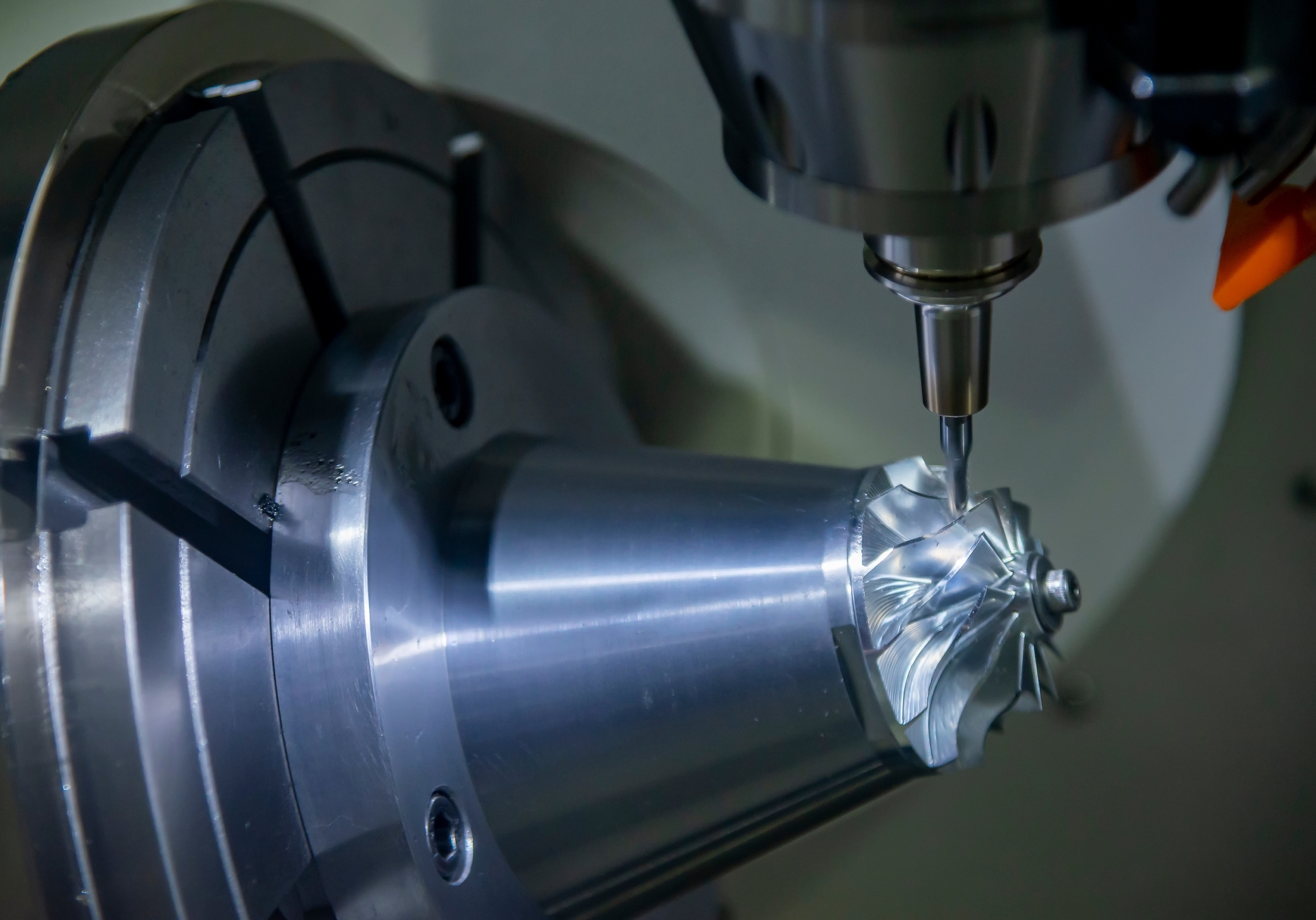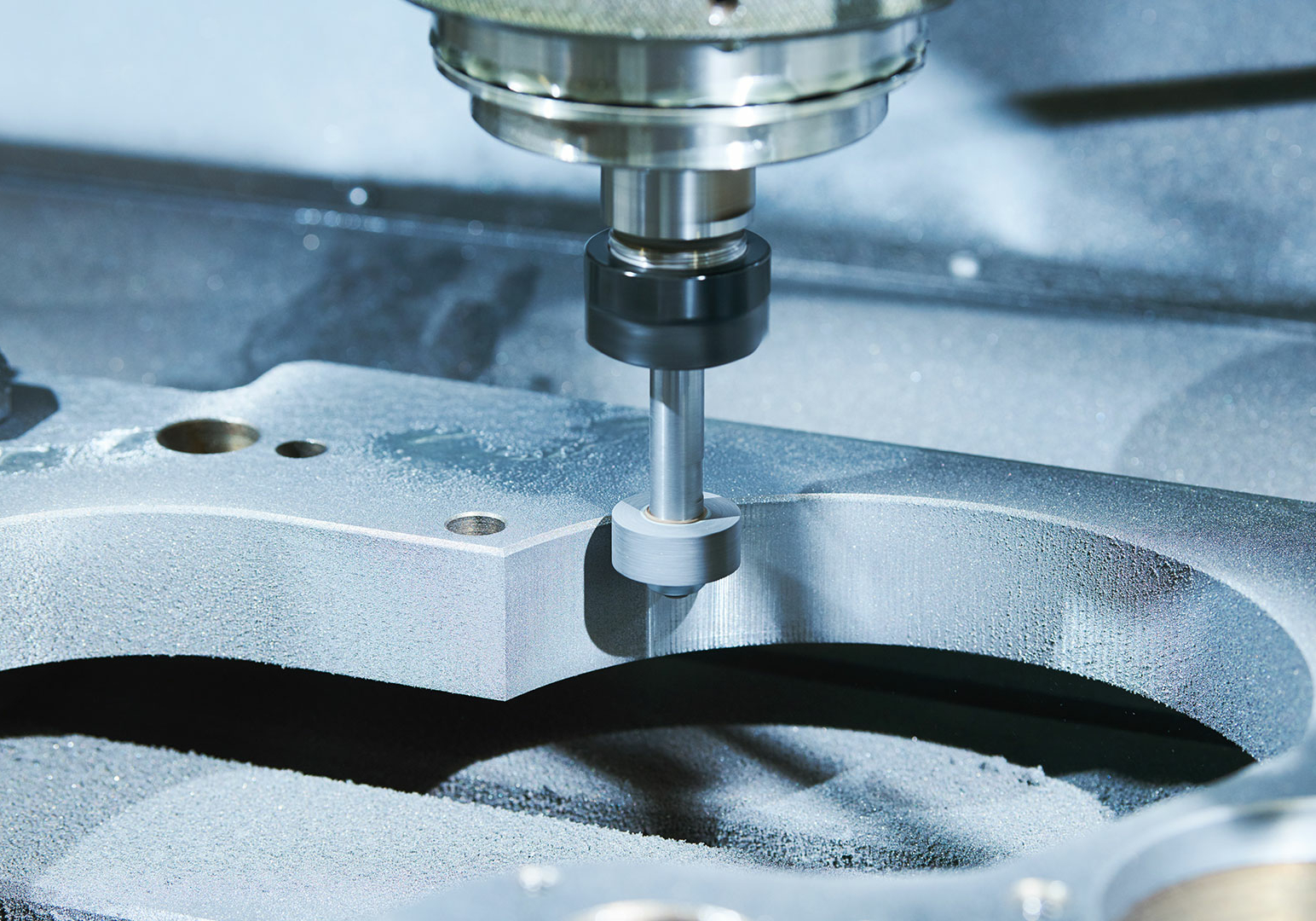Are you curious about the differences between CNC vs Manual Machining?
Here at Link Business, we provide a range of CNC machining services, working with ferrous, non-ferrous, and exotic materials. In this article, we'll explore the differences between CNC and manual machining, highlighting their advantages and discussing which to use for your machined parts.
Understanding CNC Machining
Computer numerical control is a manufacturing process that uses computer software to control the movement of machine tools within the CNC manufacturing process. It uses pre-programmed instructions that dictate the movement of the machinery, allowing for precise and accurate production of complex parts and components.
Typically, the process begins with the creation of a 3D model or a 2D design using computer-aided design (CAD) software. This design is then converted into a machine-readable format and loaded into the CNC machine. Once the machine is set up and the material is secured, the machining process begins, with the machine following the programmed instructions to produce the desired part or component.
CNC machines come in various different types. Here at Link Business, we offer a range of CNC machining processes, including:
- CNC Milling: Similar to manual mills, these machines use rotating cutting tools to remove material from a workpiece. They are commonly used for tasks such as drilling, cutting, and shaping materials.
- CNC Lathes: These machines are used for machining cylindrical workpieces. They hold the workpiece in a rotating spindle and use cutting tools to remove material and create the desired shape.
- CNC Sliding Head: This has a sliding headstock that moves along the length of the material being worked on. This allows the workpiece to move while the CNC tool remains stable, allowing for greater accuracy and the ability to produce complex shapes with minimal effort.
We use 2, 3 and 4-axis lathes to ensure we have the capacity to get the job done. Our machines cover all bases from 4mm to 38mm in diameter, offering a 24-hour lights-out service. To learn more about the different types of CNC machines, we recommend reading our recent article outlining 12 types.
Manual Machining Techniques: The Traditional Approach
Unlike CNC machining, manual machining is a traditional method where the machining process is controlled by skilled operators who manipulate the cutting tool and shape the workpiece by hand.
This tool can be simple or complex, but the relative movement is done by an operator. This often allows for greater flexibility and adaptability than CNC techniques, as the operator can make adjustments on the fly.
Although it may take longer to produce parts compared to CNC machining, manual machining techniques remain a viable option for those who value craftsmanship and the human touch in the manufacturing process. A Manual lathe is often used for more complex parts that require a higher level of skill from the machinist.
The Advantages of CNC Machining
Now that we know the differences between these two methods, it is worthwhile discussing when to adopt each method. The advantages of CNC machining often lead to it being preferred over manual machining techniques, so let’s explore what these are.
Increased Precision and Accuracy
You experience a higher level of precision and accuracy with CNC machining compared to manual machining:
- Consistency: CNC machines follow programmed instructions, ensuring that each part is produced with the same level of precision every time. This eliminates the possibility of human error and ensures consistent quality.
- Complex Geometry: These machines are capable of producing intricate and complex parts with precision. They can follow complex CAD/CAM instructions to create parts with tight tolerances and intricate details that would be challenging for manual machining.
- Repeatability: Once a program is created for a specific part, CNC machines can produce multiple identical parts with the same level of accuracy. This allows for mass production and ensures that each part meets the required specifications.
- Automated Measurements: CNC machines can be equipped with sensors and probes that can measure the dimensions of the part during the machining process. This allows for real-time monitoring and adjustments, ensuring that the final product meets the desired specifications.
Enhanced Efficiency and Time Savings
The automated nature of CNC machining eliminates the need for manual intervention in every step of the process, reducing setup and changeover times significantly. This means that you can complete more jobs in less time and at a lower cost, making it ideal for large-scale production.
Additionally, CNC machines can run continuously, reducing downtime and maximising your output. Here at Link Business, this allows us to offer a 24-hour lights-out service, allowing us to meet time-sensitive and tight deadlines.
Versatility and Flexibility
With its ability to quickly and easily switch between different materials and complex geometries, CNC machining offers unparalleled versatility and flexibility:
- Handling Various Materials: It allows you to create parts from different materials without the need for separate machines or setups.
- Quick Changes: CNC machines allow for quick and easy changes between different parts. With manual machining, you'd need to reconfigure the machine and make manual adjustments, which can be time-consuming and prone to errors.
With its ability to quickly switch between materials and complex geometries, CNC machining offers the perfect solution for a wide range of applications.
Cost Differences Between CNC and Manual Machining
One of the main advantages is the reduced labour costs associated with CNC machining. With manual machining, skilled operators are required to manually operate the machines, which can be time-consuming and costly. In contrast, CNC machining services utilise computer-controlled machines that require minimal human intervention, resulting in reduced labour costs.
Additionally, these machines are highly efficient in minimising material waste. Their precision and accuracy allow for the extraction of maximum material from a workpiece, reducing waste and saving on material costs.
Furthermore, they are ideal for smaller projects as they can produce multiple parts simultaneously, leading to increased productivity and substantial cost savings.
Applications of CNC Machining
Because of these advantages of CNC machining, it is widely used across many industries; from aerospace and automotive to healthcare, consumer goods and beyond.
Aerospace and Automotive
The automotive industry utilises CNC machines for manufacturing various components, such as gearboxes, axles, valves, and cylindrical blocks, allowing for one-off custom parts and prototyping.
In addition, this machining is widely used in the aerospace industry as well, where it's used to manufacture complex parts for aircraft engines, landing gears, and structural components.
Medical and Healthcare
From X-ray monitors to surgical instruments and MPI scanners, CNC-machined parts are used in various medical equipment. Because they offer precise control and accuracy, CNC machining is ideal for creating highly intricate and complex parts that are required in the healthcare industry.
Electronics and Consumer Goods
CNC machining is a vital component in the manufacturing process of electronics and consumer goods. It plays a crucial role in the creation of housings, fixtures, PCBs (Printed Circuit Boards), and jigs for the electronics industry. This technology is widely embraced by electronics manufacturers as it guarantees both precision and efficiency in production.
One industry that heavily relies on CNC processes is the mobile phone and microphone industry. The intricate designs and precise measurements required for these devices make CNC the preferred method for producing their components. By utilising CNC techniques, electronics manufacturers can ensure the production of high-quality products that meet the demanding standards of the market.
Considerations of CNC Machining
You may be sold on the benefits of CNC machining for your next project. Before doing so, it’s important to consider that this method often requires:
- Initial Investment and maintenance costs: Though CNC manufacturing processes are often cheaper in the long run when dealing with large quantities, there are high initial investment costs associated with the machinery.
- Skilled programmers: While CNC manufacturing processes do not require a manual operator, it does require someone to program the tools to cut your desired shapes.
Here at Link Business, we offer subcontract machining services that take away the risk and complexity of using CNC technology. Using our advanced tools and, with the help of our skilled programmers, you can experience all of the benefits of CNC machining without the heavy upfront investment, costs, or risks.
When to Use Manual Machining
While CNC is the superior of the two methods, there are some instances where manual machining may be beneficial. Especially in cases where:
- You have a limited budget: As manual machining often costs less and has a lower start-up fee.
- Where you have access to a skilled machinist.
- Where less accuracy is required: If the part you need doesn't require the high level of accuracy that CNC machining provides, manual machining can be suitable. However, keep in mind that human error is more likely in manual machining, which can lead to more rejections and increased costs.
- In small-scale production scenarios: Manual machining is ideal for one-off or small-scale productions where the quantity of parts is limited. If you only need a few parts, manual machining can be a practical solution.
When choosing this method, it’s worth noting that manual machining has its drawbacks. The process is slow, and human error-prone, resulting in more rejections and higher waste. Additionally, it can't handle modern large production or complex part requirements and numbers.
If you’re trying to decide which method is right for you, we recommend getting in touch with our expert team of CNC machinists, who can help advise you on which method is best suited to your needs.
CNC Machining vs Manual Machining: Which to Choose?
In conclusion, CNC machining offers numerous advantages over manual machining. With its precise and automated processes, CNC machines can produce complex and accurate parts with minimal human intervention.
This technology is widely used in various industries, such as automotive, aerospace, and manufacturing, and continues to revolutionise the manufacturing industry with its efficiency and precision.
Regardless of your project needs, we recommend getting in touch with our expert team of CNC machinists. We work with a range of ferrous, non-ferrous and exotic materials, and our advanced tools allow us to offer an efficient and fast 24-hour lights-out service.

